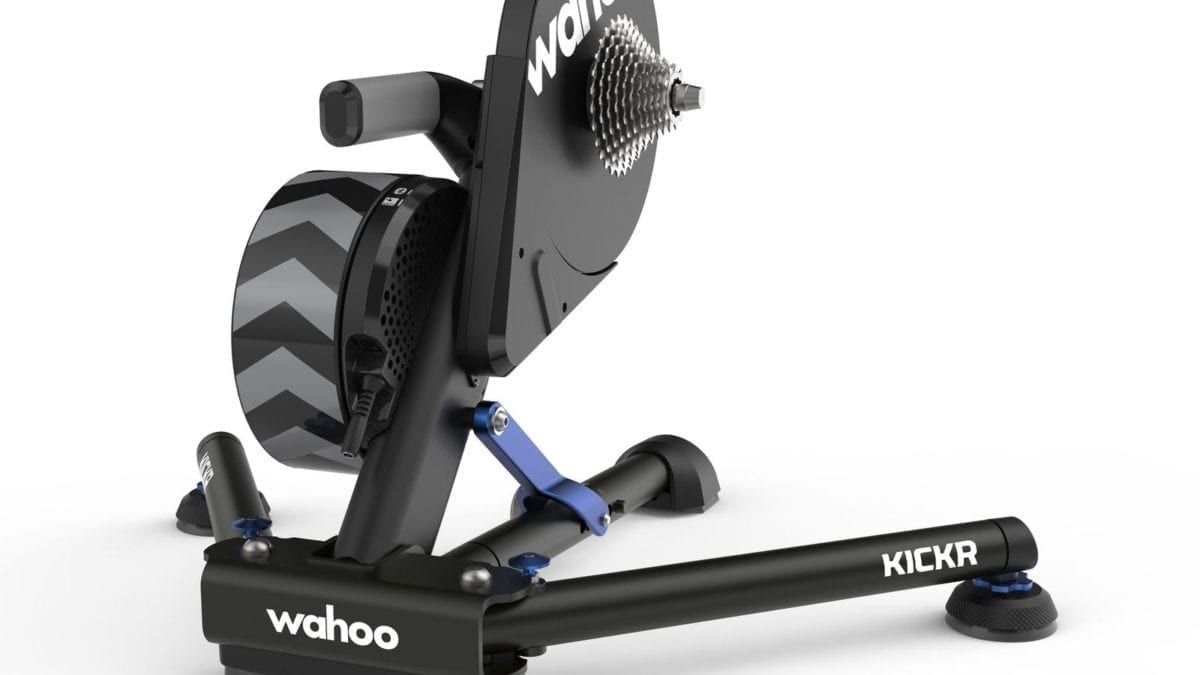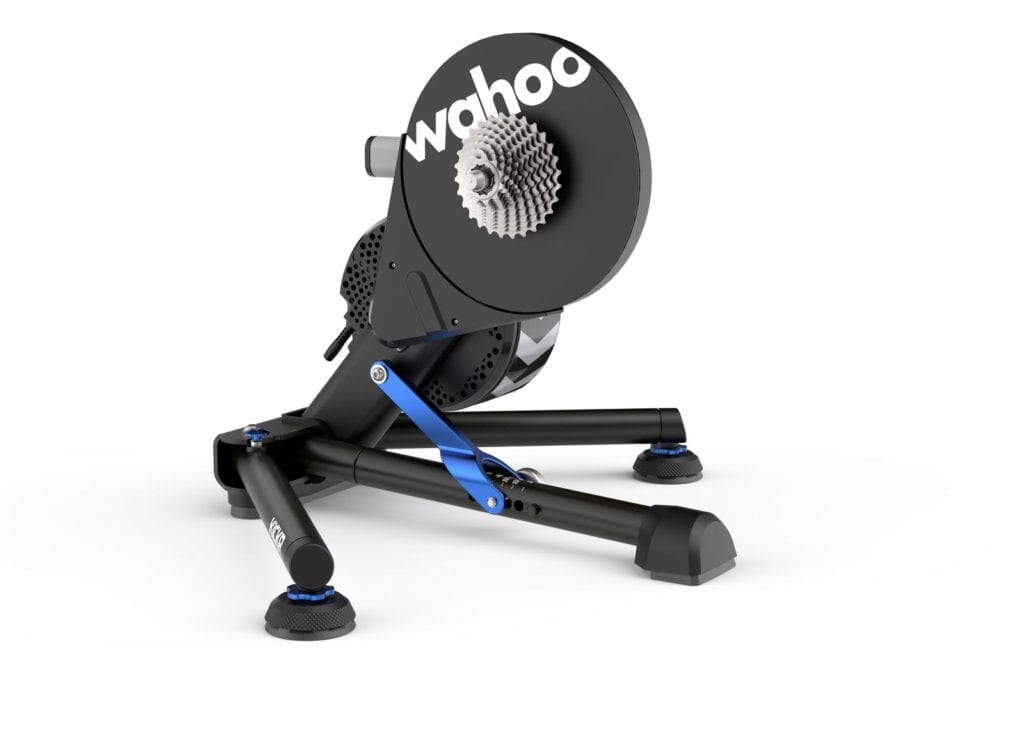Review: The new Wahoo Kickr addresses all your trainer grievances
New features include automatic calibration, squishy feet and a networked connection
 Photo by:
Wahoo
Photo by:
Wahoo
The latest Wahoo Kickr came out this past August. It’s the fifth generation of Kickr by the Atlanta-based company. Wahoo says the trainer’s accuracy has improved. It’s now +/- 1 per cent, from +/- 2 per cent. You don’t have to calibrate with a spindown anymore as it has automatic calibration. The Kickr comes with a feature I couldn’t try: Kickr Direct Connect. There’s a new port, which looks like it’s for plugging in your landline phone. It’s actually for a yet-to-be-released-during-the-Kickr’s-testing-period adaptor that would let you wire the trainer into your network. The connection should solve any connectivity issues you might have. Finally, there are the new Axis feet. They let your bike move about five degrees side to side as you do your trainer workout. You adjust the squish of the feet with one of the three pairs of discs supplied. I used the smallest discs, which are designed for lighter riders.
[shareprints gallery_id=”68670″ gallery_type=”masonry” gallery_position=”pos_center” gallery_width=”width_100″ image_size=”small” image_padding=”0″ theme=”dark” image_hover=”false” lightbox_type=”slide” titles=”true” captions=”true” descriptions=”true” comments=”true” sharing=”true”]The movement and effects of the Axis feet are subtle. I found it hard to say if the sway reduced the onset of discomfort during a trainer session. On trainers without any comfort features, I can be fine throughout a whole workout. Other times, I’ll be standing and shifting a lot. The Axis feet didn’t completely eliminate all in-saddle squirming, but I did welcome the movement they provided.
 During my time on the previous generation of Kickr, I found myself quite addicted to a feature that’s also on the latest trainer. You can set it to smooth your power in erg mode. With that setting on, you hit the target wattages of a workout easily (if you have the legs). You’ll get a steady power number and you’ll rack up the stars in Zwift as you complete your workout as long as you keep pedalling. Go ahead: check your phone during easier intervals. You’ll nail it. No problem, right? Well, if you are a real stickler for accuracy, you won’t be seeing the actual spikes and dips that happen naturally when you are in erg mode. With other trainers, you still have to manage these with your cadence. With power smoothing – not so much. I’m sure it all averages out nicely, but it’s kind of lazy training. (My thinking here on erg mode is influenced by a story I’ve run by regular contributors Steve Neal and Andrew Randell.) I try to maintain intervals without assistance now. It keeps me more engaged, and it’s a more realistic management of my effort. Then again, on some endurance workouts, it’s not so bad to check social media, is it? ($1,800, wahoofitness.com)
During my time on the previous generation of Kickr, I found myself quite addicted to a feature that’s also on the latest trainer. You can set it to smooth your power in erg mode. With that setting on, you hit the target wattages of a workout easily (if you have the legs). You’ll get a steady power number and you’ll rack up the stars in Zwift as you complete your workout as long as you keep pedalling. Go ahead: check your phone during easier intervals. You’ll nail it. No problem, right? Well, if you are a real stickler for accuracy, you won’t be seeing the actual spikes and dips that happen naturally when you are in erg mode. With other trainers, you still have to manage these with your cadence. With power smoothing – not so much. I’m sure it all averages out nicely, but it’s kind of lazy training. (My thinking here on erg mode is influenced by a story I’ve run by regular contributors Steve Neal and Andrew Randell.) I try to maintain intervals without assistance now. It keeps me more engaged, and it’s a more realistic management of my effort. Then again, on some endurance workouts, it’s not so bad to check social media, is it? ($1,800, wahoofitness.com)
